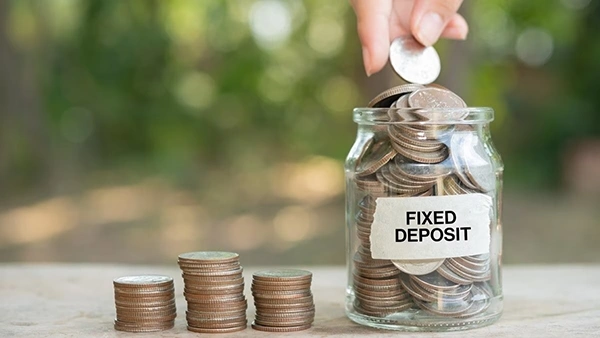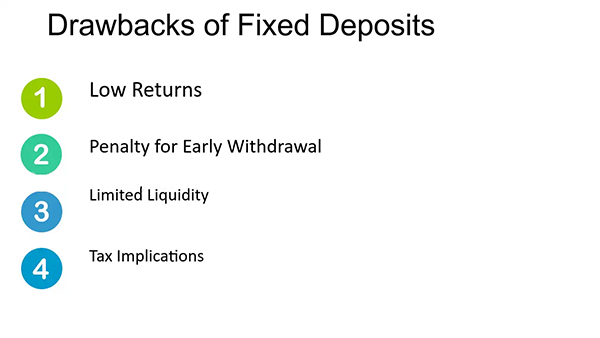FD vs RD: Choosing the Right Investment Based on Your Financial Goals
Do you make monetary commitments? Asset accumulation is one of the proven ways that help you make monetary gains by doing simply nothing. People can make good income out of it, and some even experience loss. But what is an investment?
According to Wikipedia, “Investment is traditionally defined as the “commitment of resources to achieve later benefits”. If an investment involves liquidity, then it can be defined as a “commitment of money to receive more revenue later.”
Two of the most popular investment types are FDs and RDs. So which one should you go for? I’ll break down all the differences between FD vs RD so you can make the right choice.
What is a Fixed Deposit (FD)?

A Fixed Deposit is a deposit offered by banks and non-banking financial companies (NBFCs) where you can deposit a certain amount of funds for a fixed period that can range from 7 days to 10 years.
The interest rate is decided beforehand, and you will get the principal amount including the fee at the end of the period. It is suitable for those who have a large amount of money available at hand to invest upfront.
Main Features of FDs
Here are some of the main features of Fixed Deposits:
- Lump Sum Investment: You invest a single time with the FD account.
- Locked-in Tenure: The capital is placed in the FD for this much tenure.
- Assured Returns: Interest derived from the FD is fixed repayment, which is more substantial than that of a savings account.
- Interest Payment Options: You can receive interest either through any regular cycle, monthly, quarterly, annually, or at maturity.
There are also some drawbacks of FD that can be seen below in the infographic.

What is a Recurring Deposit (RD)?
A Recurring Deposit allows you to invest a fixed amount regularly, usually every month, over a restricted period that usually runs from 6 months to 10 years. This type of deposit encourages disciplined saving, as people who do not have large stakes can save regularly.
Main Features of RDs
Below are some of the important features of recurring funds:
- Regular Investments: You make regular payments in the form of a fixed amount every month.
- Fixed Tenure: Like FDs, RDs also have fixed terms.
- Competitive Interest Rates: RDs usually offer interest rates almost at par with FDs.
- Disciplined Saving Habit: RDs inculcate a habit of depositing cash regularly.
Key Differences between FD and RD

The first and foremost difference between FD and RD is the way you deposit your money. Apart from this, some more differences will help you better understand them:
| Aspect | Fixed Deposit | Recurring Deposit |
| Investment Method | In an FD, you make a one-time lump sum withdrawal for a fixed period. | In an RD, you deposit monthly installments over the selected tenure. |
| Interest Rates | FDs generally offer slightly higher returns since the entire principal amount is invested from the beginning. | RDs offer competitive rates but may return lower compared to FDs over the same tenure since the periodic contribution is smaller. |
| Liquidity | FDs are not liquid since your income is locked in until maturity. Early withdrawal will be penalized. | RDs are more versatile because you contribute smaller amounts regularly, which makes it easier to access some funds if needed. |
| Best Candidates: | FDs are ideal for people who have a lump sum available for investment and who want guaranteed returns without uncertainty about market fluctuations. | RDs are ideal for people who want to save gradually through monthly pledges and may not have large sums available upfront. |
Which Option Should You Choose?
The choice of FD and RD mostly depends on your financial goals and specifics. If you have a lump sum amount and can set it apart for a specific period that you would not need access to until a period, then an FD will be suitable for you.
It offers a higher return and guarantees your principal commitment. If you like to save small sums regularly and wish to grow them gradually, an RD will help you inculcate the saving discipline while simultaneously earning attractive rates of interest.
How to Generate Passive Income in India
Generating passive income is essential for achieving personal stability and independence. Many individuals seek ways how to create passive income in India, yet few are aware of the available options.
Fixed Deposits (FDs) and Recurring Deposits (RDs) are two effective methods that can significantly contribute to this goal. Here are some key points on how they can help:
- Fixed Deposits Investment: By placing your savings into fixed accounts with reasonable interest rates, you can create a steady stream of income through interest payments. Many banks offer monthly or quarterly payouts that can supplement your regular income.
- Utilising Recurring Deposits: Though RDs are essentially savings instruments, they can also help one build up savings that could be later used in more productive securities such as mutual funds or stocks. The habit of saving through RDs each month readies you for future investment opportunities that bring in passive income.
- Diversification of Investments: You can also diversify your portfolio by including FDs or RDs with other spending options, such as real estate or dividend-paying stocks. This helps in scaling the potential of passive income with minimal risk.
- Reinvestment of Returns: The returns obtained from FDs or RDs can also be reinvested in some other capital options, which have better growth prospects in the long term.
PRO TIP
Go for company fixed deposits as they offer better returns and multiply your investment over time!
Conclusion
Understanding the differences between FDs and RDs is important when you have to invest your capital in the light of your fiscal goals. Each one is important and can be a part of a sound financial strategy.
Considering all the aspects related to your economic situation and goals, for example, if you need short-term returns or are looking for long-term savings, will help you make choices more aligned with your needs.
Whether you opt for an FD or an RD, both of them can help pave the way toward achieving financial security and creating income in India over time.
